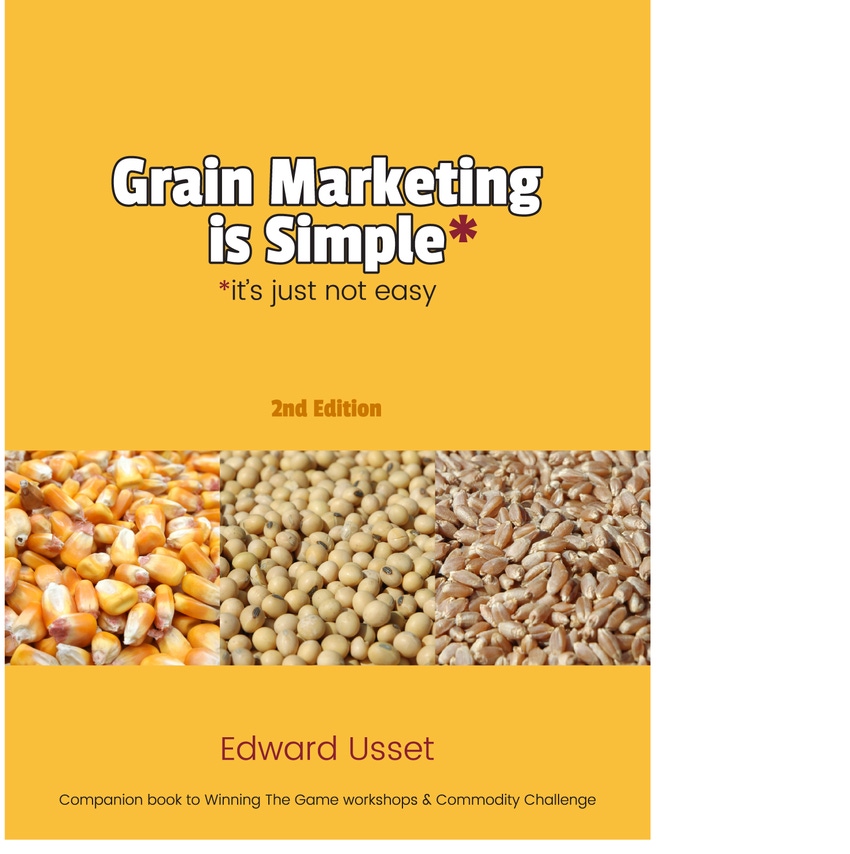
In 2007 I released my first book, “Grain Marketing is Simple (it’s just not easy).” Eight years later I am pleased to announce my completely revised and much anticipated 2nd Edition, to be released in September.
Why now? Because so much has changed in the past eight years. For example, grain prices doubled. The original edition has too many references to $2.50 corn, $4.00 wheat and $6.00 soybeans. How could I know that the price paradigm would shift so dramatically?
Production costs also doubled. In 2005, an efficient farming operation in the heart of the Corn Belt could produce corn for less than $2/bu. and soybeans for less than $5/bu. Today, those figures are closer to $4.50 and $11/bu.
Government policy has also changed. When I released the first edition, loan rates and deficiency payments were relevant. Today, a new farm bill and smaller safety net puts greater emphasis on your need for a grain marketing plan.
But here, in my mind, is the most important reason to update and release a 2nd Edition: the Second Golden Age of American Agriculture is over, and the time is right to return to a proactive approach to grain marketing.
The Second Golden Age of Agriculture?
I first talked of this era in my November 2013 CSD column. The First Golden Age of Agriculture occurred 100 years ago, in the decade leading up to and including WWI. The Second Golden Age (2007-2014) was another extended period of high prices for grains relative to production costs. In hindsight, 2007 was not the best time to offer the proactive approach to marketing outlined in my book. But offer I did and, while I stand by my approach, grain producers who ignored me also found success during the Second Golden Age of American Agriculture.
Why do I believe it’s over?
Demand growth has slowed. The growth in corn used for ethanol production has flattened since 2010. The impact was delayed by drought in 2012. “Corn is King,” but flat demand dulls the crown. A wavering economy in China threatens to flatten the demand for soybean imports.
Flat demand has given supply time to play catch-up, and it shows in the balance between prices and production costs. Every month since last July, corn prices received by Iowa farmers have been less than estimated production costs for the Heartland Region (as estimated and reported by USDA). Did you know that between November 2006 and June 2014 (92 months of the Second Golden Age), there were only 3 months when USDA reported an Iowa corn price less than production costs? For perspective, there were only 22 months in the previous decade (September 1996 – September 2006, or 120 months) when Iowa prices exceeded costs. It looks like the Second Golden Age has ended.
Prices won’t always be low. In fact, hoorah for an old-fashioned weather rally that came to the fore in late June. The proactive approach outlined in my 2nd Edition of “Grain Marketing is Simple” says that we need to pay attention to pricing opportunities before harvest. Let’s pay attention to this one, too.
About the Author(s)
You May Also Like






